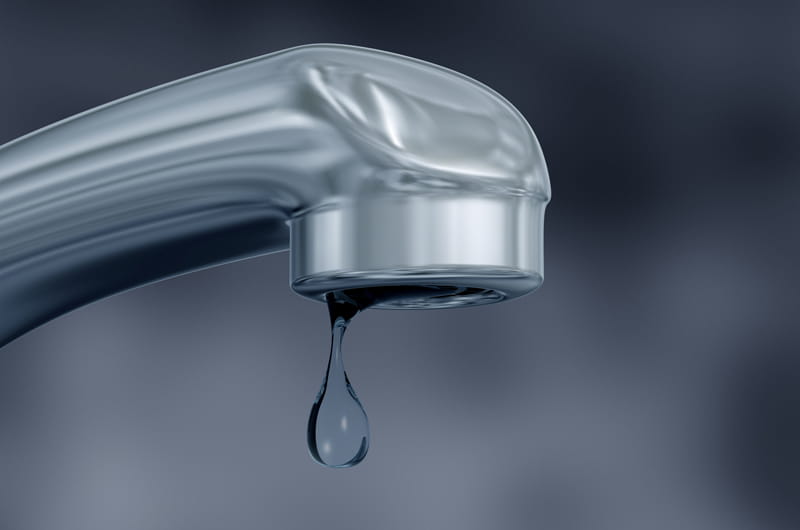Could Low-Flow Create High Risk? EPA Taps Drexel to Study Water Quality Impact of Conservation Practices

- When Climate Disasters Hit, They Often Leave Long-term Health Care Access Shortages, Drexel Study Finds
- New Research Highlights Health Benefits of Using Heritage Art Practices in Art Therapy
- Chief Defender at the Defender Association of Philadelphia, Keisha Hudson, Will Address Drexel Kline School of Law Graduates at Commencement
- How an Experiential Learning Research Project Led to a Full-Time Job

Researchers from Drexel, Penn State, the University of Colorado - Boulder, and the Environmental Science Policy and Research Institute will examine risk factors associated with reduced water use in building plumbing.
As public awareness of the need for water conservation, and new water-saving technology, have become increasingly effective at stemming excess water use, new questions are surfacing about how our plumbing, which was built to handle a regular flow of water, might now be a risk factor for bacterial and chemical contamination. In hopes of preventing future public health crises related to the systems that carry and treat our water, the Environmental Protection Agency is tasking a team of researchers, led by Drexel University, with a $2 million project to bring together existing and new experimental data on building plumbing—the stretch of pipes that takes water from main to tap—into a risk assessment tool that can guide new water use and safety regulations.
“Providing clean drinking water is an essential part of EPA’s mission to protect public health, and these efforts should focus from the source to the faucet,” said Thomas Burke, agency science advisor and deputy assistant administrator of EPA’s Office of Research and Development. “The research announced today will guide decision makers as they design, renovate or manage plumbing systems to provide safe and clean drinking water.”
According to a report from the National Research Council, a substantial portion of waterborne disease outbreaks in the United States can be traced to building plumbing systems. Recent outbreaks of Legionella in New York City and the incidence of high lead in drinking water discovered in Flint, Michigan and many urban areas around the country, have raised questions about how best to manage aging and underused water systems.
The answers, according to Patrick Gurian, PhD, a professor at Drexel who is leading the research team, are difficult to pin down because the combinations of water use, treatment and plumbing scenarios that can cause problems are myriad and perpetually evolving.
“This is a difficult issue to explore in the lab because microbial environments in water infrastructure are ever-changing, due to age of the pipes, how much they’ve been used, what chemicals have been used to treat the water and any number of things that can affect the water source,” Gurian said. “There is plenty of information out there about all of these various aspects, but it needs to be brought together and validated, so we can move toward a consensus on the ‘right’ way to manage building water issues going forward.”
The group, which includes environmental engineering and public health experts from Drexel, as well as the University of Colorado at Boulder, Penn State University and the Environmental Science Policy and Research Institute (ESPRI), will work to corral the answers over the next three years through an exhaustive literature analysis, a close examination of 20 case studies from around the country and a series of lab experiments on household plumbing.
“Through the literature analysis we want to get our arms around the many water conservation regulations and procedures that are guiding building water system design and use today,” Gurian said. “Things like water use restrictions in Southern California, or LEED building certifications, all affect the amount of water that is flowing through our pipes at a given time and how long that water is remaining in them—these are important factors to consider when determining risk.”
Gurian suggests that new water infrastructure could harbor harmful bacteria and chemicals just as easily as the aging systems that have been the focus of national attention due to concerns about lead levels in drinking water in the aftermath of the Flint crisis.
“New systems are being designed with historic flow rate and capacity in mind, but current data and future projections suggest that much less water will be going through those pipes, and that is significant when it comes to making decisions about treatment. The same can be said for systems in aging cities, or urban areas that have experienced depopulation,” Gurian said. “Conditions that have not been problematic in the past might now raise concerns because the average flow rate and duration of time water spends in the pipes have significantly decreased.”
This is where new case study and experimental data will help the team get a clearer picture of the stresses placed on today’s water infrastructure. Researchers are designing experiments to look at how household appliances like water heaters and radiators can harbor microbes when water use is reduced. And teams at the University of Colorado at Boulder will look at newer practices and water systems, while partners from ESPRI will lead investigations on more seasoned infrastructure, such as Philadelphia’s. Penn State will bring expertise on building water system design practices that will enable the team to identify where changes in design practices are warranted.
“We have a nice contrast setup between Boulder and Philadelphia, both in the type of water disinfectants being used and the relative age and use of the systems,” Gurian said. “Philadelphia’s is obviously an older system and a city that has seen some depopulation in areas—this is one way to study how change in water use affects water quality. Another is Boulder’s situation, where the city is new and growing, and the population is savvy about water conservation—they’re building super green buildings with low flow technology and great conservation features, so the pipes are getting a fraction of the flow that they’re designed to accommodate. We could see increased biofilm development in both situations though, on the surface, they seem to be very different types of cities.”
Ultimately, the group will produce a web-based tool that will integrate all of their findings—on how water age, disinfectant type and concentration, and flow rates affect water quality—to help facility and utility managers make decisions about treatment, create guidelines for household use and better assess risk when crises arise.
“We want to make the massive volume of data as useful and accessible as possible,” Gurian said. “We see it as a tool for utility-level decisions, but it could also affect us at the homeowner-level when it comes to something like setting the temperature of a water heater.”
Drexel News is produced by
University Marketing and Communications.